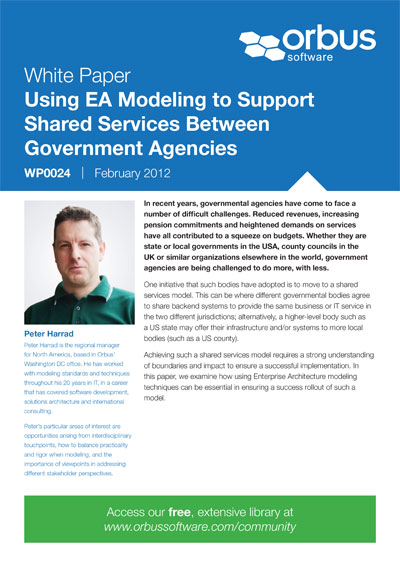A paper outlining how government agencies can use EA modelling to deliver a shared services model and 'do more with less'.
In recent years, governmental agencies have come to face a number of difficult challenges. Reduced revenues, increasing pension commitments and heightened demands on services have all contributed to a squeeze on budgets. Whether they are state or local governments in the USA, county councils in the UK or similar organizations elsewhere in the world, government agencies are being challenged to do more, with less.
One initiative that such bodies have adopted is to move to a shared services model. This can be where different governmental bodies agree to share backend systems to provide the same business or IT service in the two different jurisdictions; alternatively, a higher-level body such as a US state may offer their infrastructure and/or systems to more local bodies (such as a US county).
Achieving such a shared services model requires a strong understanding of boundaries and impact to ensure a successful implementation. In this paper, we examine how using Enterprise Architecture modeling techniques can be essential in ensuring a success rollout of such a model.
Please login to continue reading or sign up to download.
